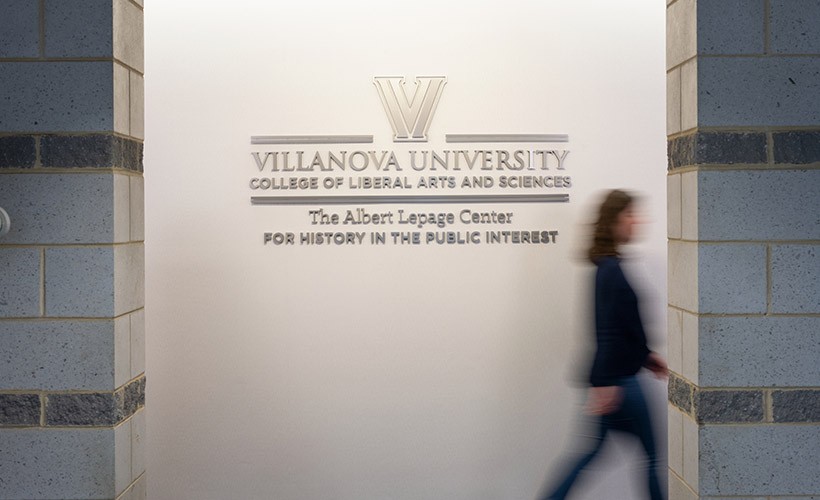How Cities Affect Climate Change, and Vice Versa: the LePage Center’s Most Recent Webinar
Courtesy of Villanova University
The Lepage Center hosted the climate change webinar recently
April 22, 2023
What role does the construction of cities play in global warming? How will urbanization provide threats or solutions to the climate crisis? Who will be affected, and when will these dreaded consequences occur? The panelists of the Albert LePage Center’s most recent webinar, entitled “Climate Change in Historical Perspective: Climate Change and Cities,” addressed questions such as these and more as they explored the complex connection between urbanization and its environmental impacts.
Caroline Murphy, a history professor at Villanova, moderated the event and introduced each of the three esteemed guests. Karen Seto, a professor of geography and urbanization science at Yale University, spoke first about the trajectory of global warming and noted the significant temperature increase the planet is predicted to reach, a temperature that is well above the 1.5 degrees Celsius above pre-industrial levels that experts originally thought. Seto explained the detrimental consequences this exponential increase will have, including impacts on coastal settlements, public health, agriculture processes and water scarcity. Over the next 30 years, Seto stated that 2.5 billion people are predicted to move into urban spaces, both currently present cities and cities that are expected to be constructed, in order to accommodate population growth. This urbanization, by installing concrete and steel structures, more cars and energy intensive units, could cause global temperatures to rise to a staggering 5.6 degrees Celsius over pre-industrial levels.
“The numbers are terrifying,” freshman Brynne Taranto said. “It is scary to think about the extreme environmental damage that could and most likely will happen in our lifetime.”
Indeed, the statistics are shocking for any observer. How did this happen? Andrew Needham, a professor of United States history with a specialization in environmental history at Brown University, addressed the national infrastructure that has contributed to the irrevocable environmental change that has occurred in the post-World War II era. He explained that America’s increasing reliance on natural gas as an energy source is a dependency powered by the national pipelines called the “Big Inch” and the “Little Inch.” The increase in fossil fuels to meet demands led to more carbon emissions, therefore accelerating pollution of the world’s environment. Needham regarded the graph that represented national carbon emission as a “hockey stick,” as it was steady before the 1940s, then a rapid, exponential increase occurred through the rest of the century and into the next. Urban environments, boasting large populations and therefore high levels of demand, fueled this jarring increase, attributing cities’ negative effects on the climate crisis. However, Needham also recognizes the potential ways in which urbanization will provide keys to sustainability. Through a denser population, a certain number of sustainable practices will be facilitated, from sharing walls in shared living facilities to an increase in walking to destinations and public transportation.
“I thought it was really interesting to view cities as both the problem to and a potential solution for climate change,” freshman Katherine Carney said. “Rural living is often acknowledged as the way to live most environmentally, but I wonder if sustainable urbanization could provide an effective alternative to that increasingly unpopular lifestyle.”
The webinar’s final speaker, Fiona Clare Williamson of Singapore Management University, wrapped up the discussion with a focused look at the connection between human settlement and the environment within Singapore between 1877 and 1911. Taking a more specific approach, she expanded on the themes presented by Seto and Needham, and tailored those themes to her consideration of Singapore at the turn of the 20th century. She examined the drought that occurred in this country and the spread of disease, water shortage and economic effects that this phenomenon had on particularly urban areas. One point she made that particularly resonates with today’s polarizing climate was that the drought also exacerbated social tensions within the cities. This tension manifested within the rioting, both peaceful and violent, that occurred because of the drought, and the human costs that those riots inflicted.
The webinar provided a comprehensive understanding of the unique and multifaceted relationship between urbanization and climate change. While many of the statistics and ideas shared were daunting, they contributed to a larger picture of the situation at hand, a crucial connection to understand as we move into an increasingly warming and populating world.











